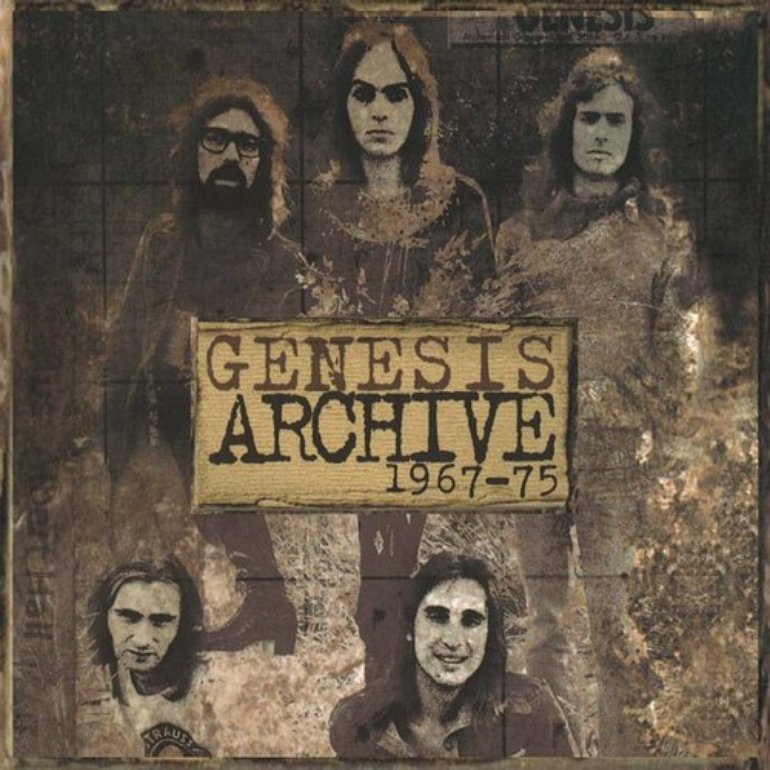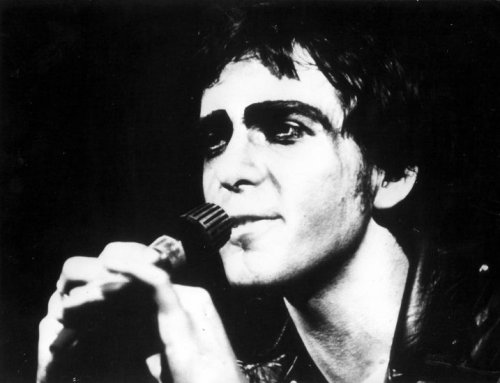In June 1974, Genesis found themselves at a pivotal moment in their career. The band, having evolved through various phases, was now at the cusp of creating one of their most ambitious and transformative albums: The Lamb Lies Down on Broadway. Genesis had entered a new phase, both creatively and personally. The group decided to record in a new environment, seeking a place that would inspire their next sonic chapter. They chose Headley Grange, a decaying old eighteenth-century poorhouse in East Hampshire, previously inhabited by artists like Led Zeppelin and Bad Company. But when Genesis arrived, it was in a dilapidated state. The previous occupants had left behind quite a mess, and the house, with its eerie atmosphere, only added to the tension brewing within the band.
Continue reading “The Lamb Lies Down on Broadway (1974) – Genesis”Archive I 1967 – 1975 (1998) – Genesis
In June 1998, Genesis released their first of two ‘Archive’ box sets: Archive 1967 – 1975 covers the era with Peter Gabriel as lead vocalist.
The plans to release ‘Archive’ box sets dated back to 1994
After the release of their last studio album Calling All Stations* in 1997, Genesis began putting together unreleased material from their history. The idea dated back to 1994. Originally there were plans to release three box sets. The first would have featured the Gabriel years, the second the period from the mid 1970’s to the early 80’s and the last the period from the mid 80’s to the early 90’s.
But over the years, there were delays and plans were changed. The recordings were released on two box sets, the first one being Archive 1967-75* , released in 1998, the second one being Genesis Archive 2 1976-1992*, released in 2000, which covers the era with Phil Collins on lead vocals. Both sets feature unreleased live performances, studio tracks and demo songs.
A complete live performance of The Lamb Lies Down On Broadway
Archive 1967 – 1975 is a box set that includes four discs. The mixing was done by Genesis producer Nick Davis. The first two discs feature a complete live performance of Genesis’ magnum opus The Lamb Lies Down on Broadway*. When the band toured the concept album in 1974/75, they played the whole double album. After this tour, Peter Gabriel left the band. The live performance in the box set is from The Shrine Auditorium, Los Angeles. Unfortunately, most of Peter Gabriel’s stories about the adventures of Rael between the songs were left out.
Peter Gabriel re-recorded his vocals at Real World Studios in 1995
Also, it is not a completely live recording. Peter Gabriel and former lead guitarist Steve Hackett re-recorded some of their parts in 1995. You can hear the difference in Gabriel’s voice if you compare the studio versions from 1974 to the live version on Archive I. Gabriel recorded his vocals at his Real World Studios. Also, the last song ‘It’, fades out because the tape machine at the Shrine ran out halfway through the song.
The live performance in general sounds more powerful than the studio version and the crowd seems to be enthusiastic. Apart from that, the songs are almost identical to the studio versions. The only exception is ‘The Waiting Room (Evil Jam)’, which was an instrumental with lots of space for improvisation that was therefore played differently every night. Apart from that, especially the title track, ‘Fly On A Windshield’ and ‘Carpet Crawlers’ stand out.
A live performance of ‘Supper’s Ready’ from 1973
Disc 3 includes live performances from the Rainbow Theatre in London, recorded on the Selling England By the Pound* tour in 1973. We finally get to hear songs like ‘Dancing With The Moonlight Knight’ and ‘Supper’s Ready’ live with Peter on vocals on an official release. Here, the stories are included. It also features a 1971 BBC recording of ‘Stagnation’ and b-sides and studio tracks from that era like ‘Twilight Alehouse’ and ‘Happy The Man.’
The last disc is the most interesting one, at least for the fans. It features songs from the band’s earliest period, still with Anthony Phillips on guitar. There are BBC sessions and many demo songs. You can hear the band becoming Genesis on this disc. Some of the tracks are real gems, from the early version of ‘Dusk’ to the appealing ‘Hey!’. There is an atmosphere in these early recordings that went missing after Ant Phillips left the band.
Apart from the four discs, there is a 82-page booklet which contains the band’s history and interviews with band members and associates.
So Archive 1967 – 1975 is a quite interesting box set. We finally get to hear official live versions of Gabriel-era songs sung by him. The only official live release with him had been Live* from 1973, which only covers songs from Trespass*, Nursery Cryme* and Foxtrot*. The inclusion of b-sides and unreleased studio tracks like ‘Twilight Alehouse’ make this box set special. Some would argue that disc 4 is only for the hardcore fans, but it also is the most surprising and most interesting of the four discs. Unfortunately some rare tracks and demos that are known to exist did not make it onto the box set. But all in all, Archive 1967-75 is an extraordinary release. Fans seemed to agree with that: It reached no. 35 in the UK charts in 1998.
The band met at Heathrow Airport to promote the release
To promote the release of Archive I, Genesis members past and present reunited for a photo shoot (and a following dinner) at Heathrow Airport in May 1998. There were Tony Banks, Peter Gabriel, Anthony Phillips, former drummer John Silver, Phil Collins, Steve Hackett and Mike Rutherford. The band’s first drummer Chris Stewart only made it to the dinner. Trespass-era drummer John Mayhew did not attend the event.
Genesis’ next ‘Archive’ release would be in 2000. It would be entitled Archive II 1976 – 1992 and feature the period with Phil Collins as lead vocalist.
*= affiliate link
The Last Show of “The Lamb” Tour – and Peter Gabriel’s Final Genesis Gig
On May 22, 1975, Genesis played the final show of their ambitious The Lamb Lies Down on Broadway tour. It would also mark the last time Peter Gabriel performed with the band as lead vocalist.
The Lamb Lies Down On Broadway: A Bold New Chapter
In 1974, Genesis entered the studio to record their most ambitious project yet: The Lamb Lies Down on Broadway. The double concept album told a surreal and complex story by Peter Gabriel, following a Puerto Rican teenager named Rael as he journeys through a strange underworld beneath New York City.
The urban American setting was a dramatic shift from the band’s earlier tales rooted in British folklore and fantasy. After touring North America, Genesis were aiming to break into the U.S. market. The Lamb was also their first true concept album (after an unsuccessful attempt on their debut), a hallmark of many progressive rock bands at the time.
Internally, however, tensions were mounting. Gabriel wrote all the lyrics and developed the story independently, while Tony Banks, Mike Rutherford, and Phil Collins composed most of the music during jam sessions at Headley Grange. Steve Hackett’s contributions were minimal, and the creative disconnect between words and music created friction. Only one track, “The Light Dies Down on Broadway”, had lyrics penned by Banks and Rutherford instead of Gabriel.
Behind-the-Scenes Tensions
Two key factors contributed to Gabriel’s growing estrangement from the band. First, he had attracted interest from The Exorcist director William Friedkin, who was keen to collaborate on a film. Gabriel was tempted, even considering leaving the band, but the project never materialized.
Second, Gabriel’s wife Jill gave birth to their first daughter, Anna, in July 1974. Complications following the birth drew Gabriel further away from the group. He was the first member to start a family, and this life change made him reassess his priorities and see a future beyond the band. His inner conflict bled into The Lamb‘s narrative, for example in the song “In the Cage,” where Rael cries, “Get me out of this cage!”
Upon release, The Lamb Lies Down on Broadway received mixed reviews and was commercially underwhelming. Ticket sales for the tour were below expectations, and several shows were cancelled. Though the album is now revered as a cult classic, its reception at the time was disappointing, particularly for Gabriel, who had poured his heart into the concept.
A Tour Like No Other
The band made the bold decision to perform the album in full on tour, even before many fans had a chance to hear it. Gabriel, already known for his theatrical costumes, pushed the visual spectacle even further, but it came at a cost. His elaborate outfits, including the infamous “Slipperman” costume, sometimes muffled his vocals or distracted from the music itself. The rest of the band grew frustrated, feeling the show had become more about theatrics than sound.
Technical problems were frequent. The stage used projected slides to accompany the story, but they often jammed or displayed out of sequence. In one infamous incident, a Peter Gabriel dummy meant to mirror him on stage was mysteriously swapped for a naked roadie. And during a song that required a small explosion, the production manager accidentally triggered a huge blast so loud that the band stopped mid-song. Peeking through the curtain, the crew member sheepishly said, “Sorry,” to which Phil Collins yelled, “You’re fired!”
Gabriel’s Departure
Midway through the tour, Gabriel made the decision to leave Genesis. Their manager Tony Smith was not surprised, but asked him to finish the remaining dates before making it public.
Gabriel’s final show with Genesis took place in Saint-Étienne, France, in May 1975. Ironically, it wasn’t meant to be the last show, but the scheduled final concert was canceled at the last minute. And so, without much fanfare, Peter Gabriel’s time with Genesis came to an end.
He had co-founded the band in 1967 alongside Tony Banks, Mike Rutherford, and Anthony Phillips. His departure, announced later that year, shocked fans and cast doubt over the band’s future. Could Genesis survive without their charismatic frontman?
As history would show — they could. And so could he.
Photo: Peter Gabriel in 1975. Photographer unknown. https://commons.wikimedia.org/wiki/File: Peter_Gabriel,_April_1975.jpg. Unknown author / CC0 (https://creativecommons.org/licenses/by/3.0).



